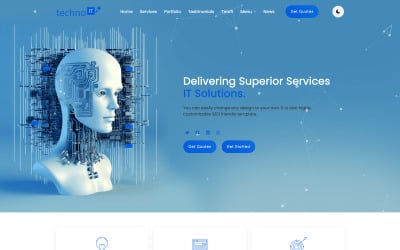Leading Tips for Developing an Impactful Internet Site Style That Transforms
In today's electronic landscape, the significance of an impactful site style can not be overemphasized, particularly when it pertains to converting site visitors into consumers. To attain this, one need to think about a range of variables, consisting of comprehending the target audience, prioritizing individual experience, and optimizing for mobile systems. The tactical use of engaging call-to-actions and a distinct aesthetic pecking order plays a critical function in leading individuals via their trip. As we check out these necessary aspects, it comes to be obvious that the success of your site depends upon even more than simply looks; it requires a thoughtful technique to style and capability.

Understand Your Target Target Market
Comprehending your target audience is essential to efficient website layout, as it prepares for producing an appealing individual experience. Recognizing who your individuals are, including their demographics, preferences, and behaviors, allows designers to customize the site's material, layout, and capability to fulfill certain needs.
Performing detailed marketing research is critical in this process. Studies, meetings, and analytics can provide important insights right into user assumptions and discomfort points. By compiling this data, developers can develop user characters that stand for various sectors of the target market, guaranteeing that style decisions are informed and relevant.
Moreover, understanding the target audience aids in picking appropriate style elements such as color pattern, typography, and images that resonate with customers. A web site that talks straight to its audience cultivates a sense of link and depend on, urging longer gos to and greater conversion rates.
Ultimately, a user-centered approach to website design not just enhances customer satisfaction however also sustains company goals by driving involvement and loyalty. By prioritizing the needs and choices of the target audience, a site can effectively serve its objective and achieve desired end results.
Prioritize Individual Experience
To improve the total performance of a site, focusing on individual experience (UX) is essential (Website Design). A properly designed UX makes certain that visitors can navigate the site effortlessly, locate info quickly, and engage with content meaningfully. This results in enhanced user satisfaction and higher conversion prices
Begin by carrying out user-friendly navigation. Menus ought to be realistically structured, allowing customers to find essential areas of the website with very little effort. Consistency in layout elements, such as shade schemes and fonts, cultivates familiarity, which is important for maintaining user engagement.
In addition, consider the loading speed of your website. A delay of just a few seconds can cause significant drop-offs, as individuals are less likely to wait for a slow-loading web page. Streamlining pictures and optimizing code can enhance efficiency and keep site visitors.
Moreover, clarity in material discussion is important. Use concise, engaging language and break up message with visuals to improve readability. By prioritizing customer experience, you not just develop a much more enjoyable environment for visitors however additionally enhance your brand name's reliability. Eventually, a concentrate on UX is a financial investment in the lasting success of your website.
Enhance for Mobile Instruments
Optimizing for mobile phones is vital in today's digital landscape, where a raising number of individuals gain access to sites through smart devices and tablet computers. A mobile-friendly style not just enhances individual experience but additionally plays a considerable function in enhancing search click reference engine positions. To achieve this, it is necessary to take on a receptive layout that instantly adjusts to different display dimensions and orientations.

Filling speed is another vital factor; mobile customers are typically less individual and anticipate rapid access to details. By prioritizing mobile optimization, you ensure that your site stays this website competitive and efficiently involves a more comprehensive target market.
Usage Engaging Call-to-Actions
A website's performance commonly hinges on its capacity to assist site visitors towards desired activities, making compelling call-to-actions (CTAs) necessary parts of style. CTAs work as the pivotal factors that route customers to engage with the site, whether that indicates making an acquisition, enrolling in an e-newsletter, or downloading and install a source.
To produce effective CTAs, clarity is vital. Usage concise language that clearly communicates the activity you desire the individual to take.
In addition, the layout of CTAs should stand apart without being noticeable. Use contrasting shades and clear typefaces to ensure they capture focus. Additionally, consider using directional hints, such as arrows or images, to assist individuals towards these buttons. By concentrating on these components, companies can substantially enhance individual interaction, driving conversions and ultimately accomplishing their site's objectives.
Concentrate On Visual Power Structure
Effective internet site style relies heavily on a well-structured visual hierarchy that overviews customers with web content perfectly. By organizing components in a manner that focuses on details, designers can enhance customer experience and help with decision-making. This includes using dimension, shade, contrast, and spacing strategically to draw attention to one of the most essential parts of a web page.
Using larger font styles for headings and subheadings establishes a clear distinction in between various areas, permitting customers to scan material easily. Additionally, using contrasting colors for buttons and calls-to-action can capture customer focus and encourage communication. Whitespace is one more vital component; it avoids mess and enables customers to concentrate Extra resources on key messages without interruptions.
Pictures and graphics should complement the message while also adhering to the established power structure, enhancing the general message (Website Design). Uniformity in style components, such as color design and typography, additional strengthens the visual pecking order, making navigating intuitive

Conclusion
In conclusion, reliable internet site style demands a comprehensive understanding of the target audience, prioritization of user experience, and mobile optimization. Eventually, a well-executed site layout serves as an important part in driving user actions and accomplishing organization goals.